








































CLASA SAMAA Control Line Nationals Barnstormers 2019
By Willie Bodenstein
Flying control line models is after free flying models the oldest discipline in the art of flying model aircraft. Flying models controlled by lines actually predates man's flight. Early versions merely constrained the model to fly in a circle but offered no control. This is known as Round-the-pole flying.

Colin Paine travelled all the way from Knysna to compete in the stunt flying discipline.

Keith Renecle flying his control line stunt plane during practise on Friday. Keith acted as Competition Director for the Stunt Flying on Saturday.
The origins of model aircraft controlled in flight by wire or other type of lines between the pilots and the aircraft are obscure but the first person to use a recognizable system that controlled the control surfaces on the model, is generally considered to be Oba St. Clair who in June 1936 flew a model near Gresham, Oregon in the USA using a complicated system of lines.

Percy Attfield, competition director for the racing discipline flying his own build Centurion. The Centurion is based on an aircraft designed by an American Paul Walker with which he won the world championships.

Henry Kurowski in action during practise on Thursday flying his Goodyear Racer. Goodyear racers are a class in which the aircraft must resemble a 'Goodyear era' full-size racer
The sport survives to this day. Aircraft now are typically controlled by a set of 20-70-foot lines usually of multi strand stainless steel, single strands of piano wire, or G.S.U.M.P. (Gel Spun Ultra-high-molecular-weight polyethylene, made by DuPont). For sport flying, non-metallic lines of Kevlar, Dacron, or other low-stretch fibre materials are commonly used.
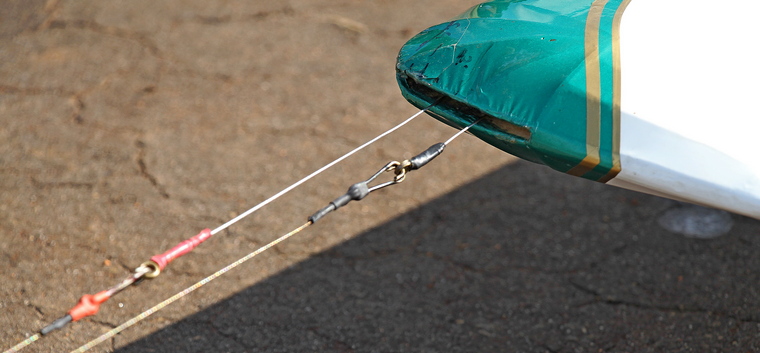
The cable line detail on Percy Attfield's aircraft. All aircraft are subjected to a pull test to confirm that the lines comply with the rules. The lines must be able to support ten times the mass of the aircraft.
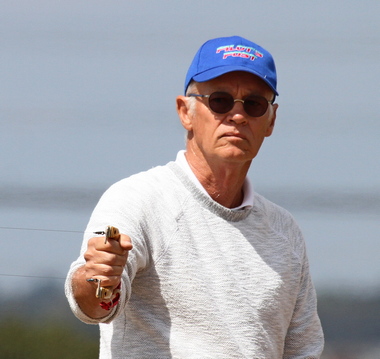
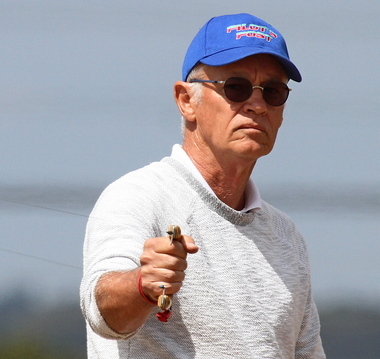
Glen Roberts's handgrip or control handle from which he controls his aircraft throughout the 13 stunt manoeuvres which consists off a reverse wing over, inside and outside round loops, inverted flight, inside and outside square loops, triangular loops, horizontal round and square eights, vertical round eights, a hourglass, four-leaf clover and overhead round eights.
The controls of a conventional 2-line/"U-Control" system consist of lead-out cables, a bellcrank, push rods and control horns. These are connected so that differential motion of the lines rotates the bellcrank, causing a pushrod to move either forward or aft. The pushrod is connected to the control surface with a control horn that moves the elevator (and flaps, if used) up and down. The pilot holds a handle to which the lines are attached. Tilting the handle with the fingers, wrist, and/or elbow motion causes the differential movement in the lines.

The Silverware that was up for grabs.

Time keepers and lap counters John Withers and Keith Renecle

The judges from left to right; Henry Kurowski, Bob Skinner and John Withers.
CLASA (the Control Line Association of South Africa) is a subsection of SAMAA (South African Model Aircraft Association) and this year Barnstormers Model Aircraft Club hosted its National championships.
Barnstormers, located off the R25 towards Bapsfontein, was founded in 1972. Since then, the club has grown with the help of the members and the community and now caters for many forms of flying, including fixed wing, helicopter, control line, turbine, drone and FPV. Over the years the club has been upgraded to include a bar, tarred runways and taxiways, dedicated helicopter facilities, braai areas and secure parking and offers a great experience for pilots and spectators alike.
The Nationals consists of three disciplines; racing, stunt flying and combat. Only the racing and stunt flying disciplines were contested at the nationals.
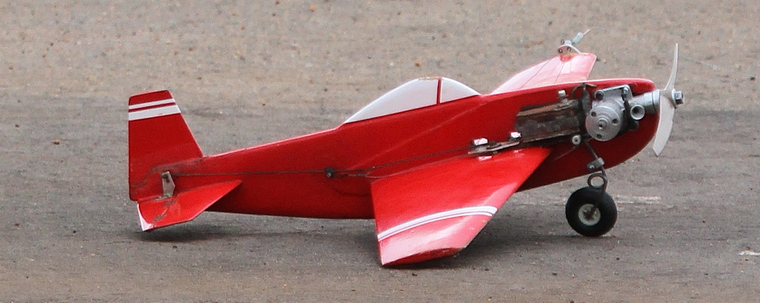
A typical Goodyear racing plane.
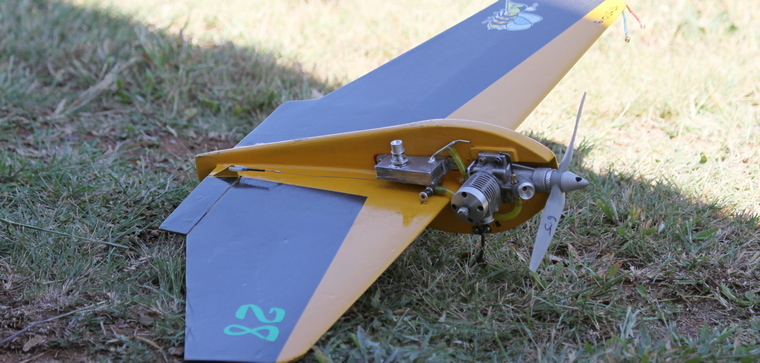
A typical F2F racing plane


Two stunt planes. Stunt planes fly a prescribed number of aerobatic manures during a competition.
Racing

Contestants and officials on Friday before the start of the racing.

Pilot Dirk Meyer from Durban and pit crew Conrad Cloete from Paarl finished first on the preliminary heats flown on Thursday.

Dirk in his race against Glen Roberts. There are rules describing how the pilots must walk around each other, and how to pass.

Conrad who manned the pits, a designated area in the circle, for one of two compulsory stops.
Racing is an event for two-person teams-the pilot and the pit crew. There are various racing classes of various levels of difficulty: F2C (the class flown internationally and at World Championships), Goodyear (semi-scale models of 'Goodyear era' full-size racers), Vintage classes and so on.

Locals, pilot Henry Kurowski and pit crew Theo Kleynhans finished second in the preliminaries. Henry was one of the stunt flying judges on Saturday.

Henry in his race against Dirk in the preliminaries flown in rather gusty conditions on Friday.

Pit crew Theo catch the aircraft, fill the tank with 7cc of model fuel from a pressurized tank, adjust the engine mixture and compression if needed, restart, and relaunch the model.
The basic idea of all the events is that a number of models (up to three) fly together, aiming to complete 100 laps in the shortest time. The model is also required to make multiple pit stops during the race, where it is refuelled, the engine restarted after which the model is re-launched. This is the job of the pit crew. There are rules describing how the pilots must walk around each other, and how to pass (harder than one might think, as each model is on the end of a pair of control lines and travelling as fast as 140 mph).

Pilot Glen Roberts and pit crew John Welman before the start of one of their races in the preliminaries. They finished third on Friday.

Glen in his race against Henry. Passing a competitor is harder than one might think, as each model is on the end of a pair of control lines and travelling as fast as 140 mph.

Pit crew John in action. Pit stops require that the model be refuelled and restarted which can be a problem with a very hot racing engines.
Pit stops require that the model be refuelled and restarted - which can be a problem with a very hot racing engines. The best FAI Team Race pit stops take around 2-3 seconds for the pilot to cut the motor and land, allowing the pit-man to catch the model which only moments ago was flying at 140 mph (230 km/h), fill the tank with 7cc of model fuel from a pressurized tank, adjust the engine mixture and compression if needed, restart and relaunch the model.
Stunt Flying

Stunt flying contestant on Saturday morning.

A judges score card

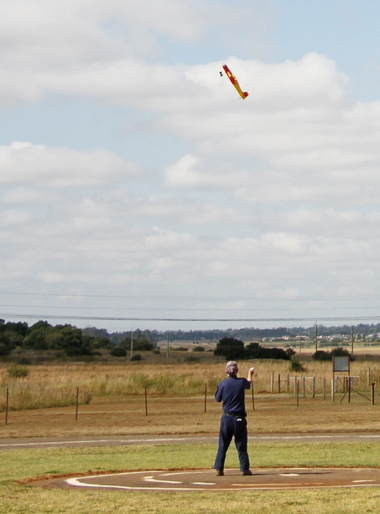
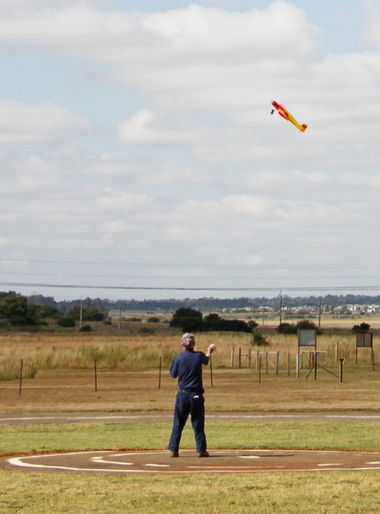
Peter Lock opened the stunt flying competition on Saturday. Pieter drove up all the way from Grahamstown in the Cape.

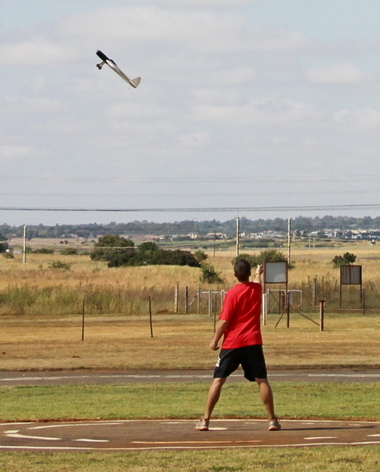
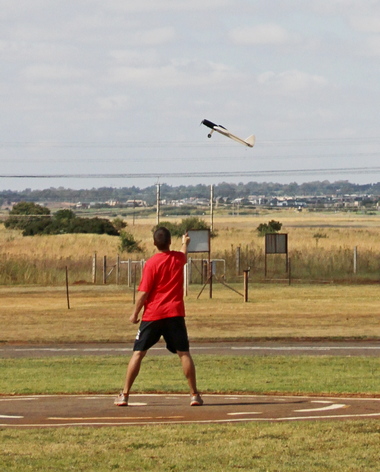
Theo Kleynhans, Chairman of the Control Line Special Interest Group in SAAMA in action.

Glen Roberts who competed in his first stunt flying competition flew a brilliant display.
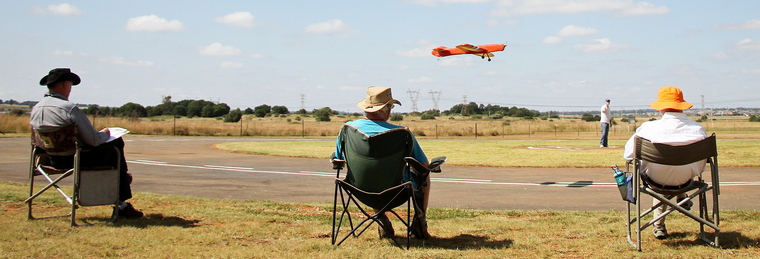
Glen's sequence from the judge's viewpoint.
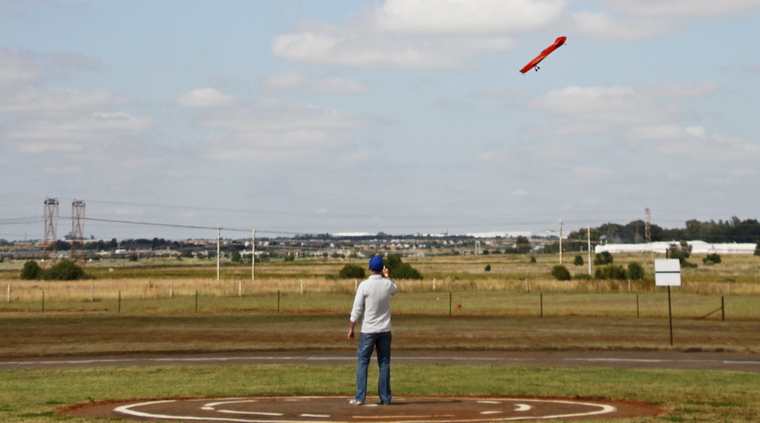
Unfortunately something went wrong and his plane crashed.
Precision aerobatics consists of flying a fixed sequence of manoeuvres which are judged by a panel of judges for accuracy and precision. The discipline was originally dubbed "stunt" and current participants refer to it that way informally.

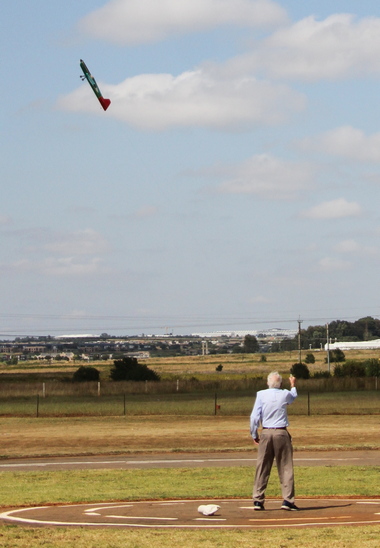
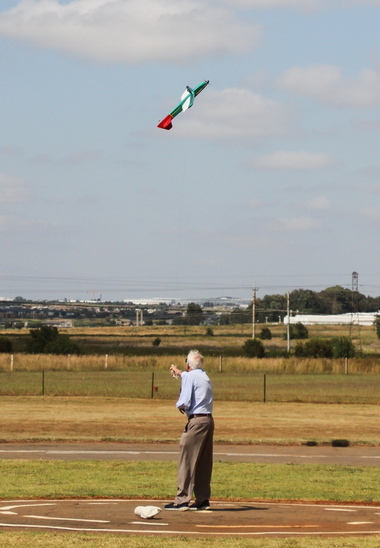
Percy Attfield flew his Centurion in the stunt fly discipline. He built the Centurion in 2008 and competed with in the 2012 World Championships held in Bulgaria.

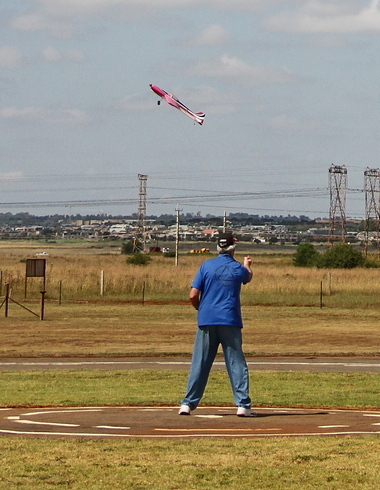
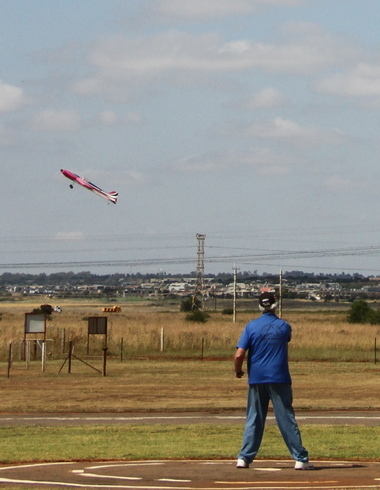
Keith Renecle who calls himself an all-round aviation enthusiast have been involved in most aspects of aeromodelling from free-flight, control line to radio control. He has also represent South Africa at world championships in the FAI F2B stunt category a number of times.

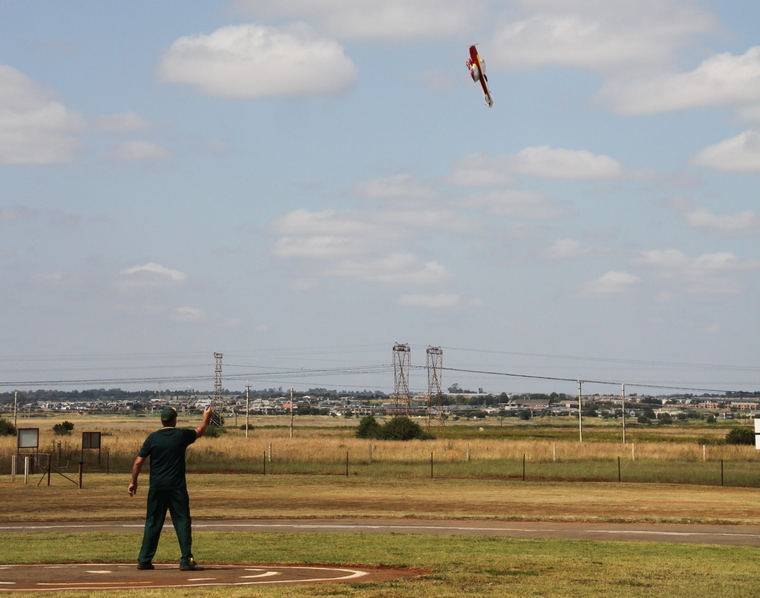
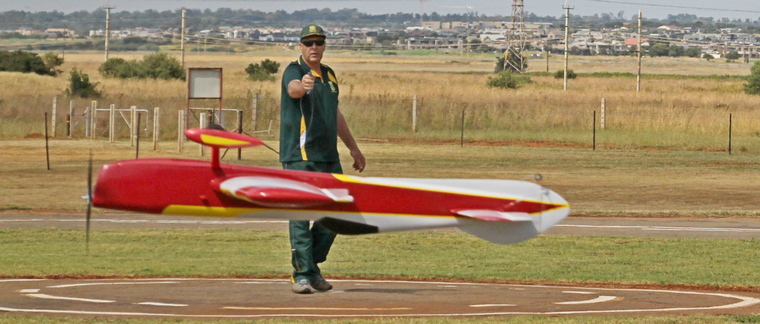
Evert Scholz represented South Africa in the World Championships held in Poland

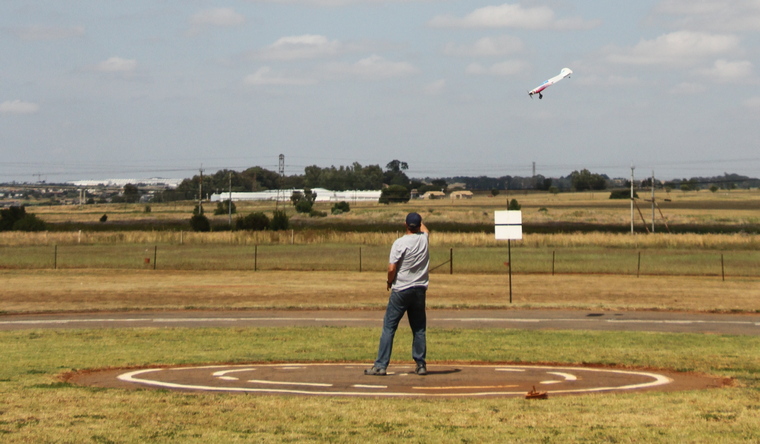

Colin Paine who lives in Knysna is another of the Cape residents that made the long journey north to compete.

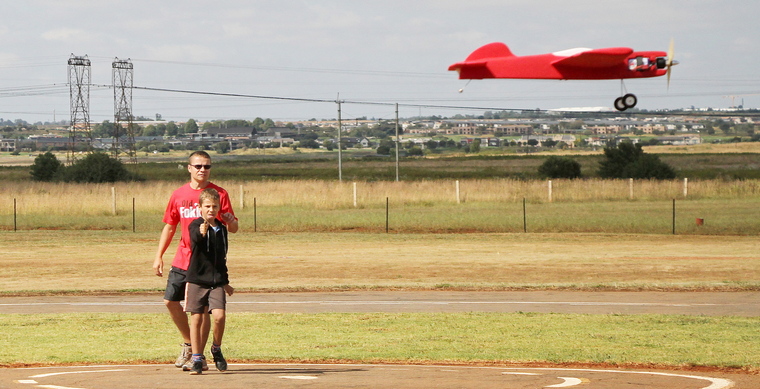
One junior, Wynand Kleynhans, Theo's son had entered the Junior Stunt Fly class.
Competitors in the SA Nationals had to fly thirteen stunt manoeuvres which consisted off a reverse wing over, inside and outside round loops, inverted flight, inside and outside square loops, triangular loops, horizontal round and square eights, vertical round eights, a hourglass, four-leaf clover and overhead round eights. Factors such as height of the manoeuvre bottoms, shapes, corner radius, and other factors are considered by the judges when compiling their scorecards.
The finals were held on Sunday and after the judges score were compiled the results of the Stunt Fly was announced.

Keith Renecle received his certificate and trophy for first place from Suzette and Theo Kleynhans. Keith scored 8459,1 points.

Evert Scholz who placed second with 7786,5 points with Bob Skinner, left and Theo Leynhans , right.

Colin Paine took third place with 7628,8 points

Wynand Kleynhans, posing with proud mom Suzette and dad Theo was the winner of the junior class.
Saturday's race finals consisted of two heats, one each for slow and one for fast Goodyear racers. Each race consisted of two hundred laps (10 kilometres) each with five pit stops. No F2F racing was held.

Taken first place in both classes was Dirk Meyer and Conrad Cloete with Bob Skinner extreme left and Theo Kleynhans extreme right.

Henry Kurowski, left and Theo Kleynhans right receieved their second place certificate for both races from Bon Skinner center.

Pit crew, John Wellman and pilot Greg Roberts was placed third in both races. Theo Kleynhans extreme left and Bob Skinner extreme right.
CLASA may not be the biggest special interest group in SAAMA but the dedication of its members bodes well for the future of control line flying. The camaraderie during the championships that was held in challenging conditions was evident with everyone lending a helping hand to everyone else.
A special mention and thank-you to Percy Attfield, Bob Skinner, John Withers, Roston Dugmore, Theo Kleynhans and Keith Renecle and the organising team who ensured that the Nationals went off without a hitch and you bend over backwards to assist us. With people like you the sport of control line flying flourish.
Colin Paine travelled all the way from Knysna to compete in the stunt flying discipline.
Keith Renecle flying his control line stunt plane during practise on Friday. Keith acted as Competition Director for the Stunt Flying on Saturday.
The origins of model aircraft controlled in flight by wire or other type of lines between the pilots and the aircraft are obscure but the first person to use a recognizable system that controlled the control surfaces on the model, is generally considered to be Oba St. Clair who in June 1936 flew a model near Gresham, Oregon in the USA using a complicated system of lines.
Percy Attfield, competition director for the racing discipline flying his own build Centurion. The Centurion is based on an aircraft designed by an American Paul Walker with which he won the world championships.
Henry Kurowski in action during practise on Thursday flying his Goodyear Racer. Goodyear racers are a class in which the aircraft must resemble a 'Goodyear era' full-size racer
The sport survives to this day. Aircraft now are typically controlled by a set of 20-70-foot lines usually of multi strand stainless steel, single strands of piano wire, or G.S.U.M.P. (Gel Spun Ultra-high-molecular-weight polyethylene, made by DuPont). For sport flying, non-metallic lines of Kevlar, Dacron, or other low-stretch fibre materials are commonly used.

The cable line detail on Percy Attfield's aircraft. All aircraft are subjected to a pull test to confirm that the lines comply with the rules. The lines must be able to support ten times the mass of the aircraft.


Glen Roberts's handgrip or control handle from which he controls his aircraft throughout the 13 stunt manoeuvres which consists off a reverse wing over, inside and outside round loops, inverted flight, inside and outside square loops, triangular loops, horizontal round and square eights, vertical round eights, a hourglass, four-leaf clover and overhead round eights.
The controls of a conventional 2-line/"U-Control" system consist of lead-out cables, a bellcrank, push rods and control horns. These are connected so that differential motion of the lines rotates the bellcrank, causing a pushrod to move either forward or aft. The pushrod is connected to the control surface with a control horn that moves the elevator (and flaps, if used) up and down. The pilot holds a handle to which the lines are attached. Tilting the handle with the fingers, wrist, and/or elbow motion causes the differential movement in the lines.

The Silverware that was up for grabs.

Time keepers and lap counters John Withers and Keith Renecle

The judges from left to right; Henry Kurowski, Bob Skinner and John Withers.
CLASA (the Control Line Association of South Africa) is a subsection of SAMAA (South African Model Aircraft Association) and this year Barnstormers Model Aircraft Club hosted its National championships.
Barnstormers, located off the R25 towards Bapsfontein, was founded in 1972. Since then, the club has grown with the help of the members and the community and now caters for many forms of flying, including fixed wing, helicopter, control line, turbine, drone and FPV. Over the years the club has been upgraded to include a bar, tarred runways and taxiways, dedicated helicopter facilities, braai areas and secure parking and offers a great experience for pilots and spectators alike.
The Nationals consists of three disciplines; racing, stunt flying and combat. Only the racing and stunt flying disciplines were contested at the nationals.

A typical Goodyear racing plane.

A typical F2F racing plane
Two stunt planes. Stunt planes fly a prescribed number of aerobatic manures during a competition.
Contestants and officials on Friday before the start of the racing.
Pilot Dirk Meyer from Durban and pit crew Conrad Cloete from Paarl finished first on the preliminary heats flown on Thursday.

Dirk in his race against Glen Roberts. There are rules describing how the pilots must walk around each other, and how to pass.

Conrad who manned the pits, a designated area in the circle, for one of two compulsory stops.

Locals, pilot Henry Kurowski and pit crew Theo Kleynhans finished second in the preliminaries. Henry was one of the stunt flying judges on Saturday.

Henry in his race against Dirk in the preliminaries flown in rather gusty conditions on Friday.

Pit crew Theo catch the aircraft, fill the tank with 7cc of model fuel from a pressurized tank, adjust the engine mixture and compression if needed, restart, and relaunch the model.
The basic idea of all the events is that a number of models (up to three) fly together, aiming to complete 100 laps in the shortest time. The model is also required to make multiple pit stops during the race, where it is refuelled, the engine restarted after which the model is re-launched. This is the job of the pit crew. There are rules describing how the pilots must walk around each other, and how to pass (harder than one might think, as each model is on the end of a pair of control lines and travelling as fast as 140 mph).

Pilot Glen Roberts and pit crew John Welman before the start of one of their races in the preliminaries. They finished third on Friday.

Glen in his race against Henry. Passing a competitor is harder than one might think, as each model is on the end of a pair of control lines and travelling as fast as 140 mph.

Pit crew John in action. Pit stops require that the model be refuelled and restarted which can be a problem with a very hot racing engines.
Pit stops require that the model be refuelled and restarted - which can be a problem with a very hot racing engines. The best FAI Team Race pit stops take around 2-3 seconds for the pilot to cut the motor and land, allowing the pit-man to catch the model which only moments ago was flying at 140 mph (230 km/h), fill the tank with 7cc of model fuel from a pressurized tank, adjust the engine mixture and compression if needed, restart and relaunch the model.

Stunt flying contestant on Saturday morning.

A judges score card



Peter Lock opened the stunt flying competition on Saturday. Pieter drove up all the way from Grahamstown in the Cape.



Theo Kleynhans, Chairman of the Control Line Special Interest Group in SAAMA in action.

Glen Roberts who competed in his first stunt flying competition flew a brilliant display.

Glen's sequence from the judge's viewpoint.

Unfortunately something went wrong and his plane crashed.



Percy Attfield flew his Centurion in the stunt fly discipline. He built the Centurion in 2008 and competed with in the 2012 World Championships held in Bulgaria.



Keith Renecle who calls himself an all-round aviation enthusiast have been involved in most aspects of aeromodelling from free-flight, control line to radio control. He has also represent South Africa at world championships in the FAI F2B stunt category a number of times.



Evert Scholz represented South Africa in the World Championships held in Poland



Colin Paine who lives in Knysna is another of the Cape residents that made the long journey north to compete.


One junior, Wynand Kleynhans, Theo's son had entered the Junior Stunt Fly class.
Competitors in the SA Nationals had to fly thirteen stunt manoeuvres which consisted off a reverse wing over, inside and outside round loops, inverted flight, inside and outside square loops, triangular loops, horizontal round and square eights, vertical round eights, a hourglass, four-leaf clover and overhead round eights. Factors such as height of the manoeuvre bottoms, shapes, corner radius, and other factors are considered by the judges when compiling their scorecards.
The finals were held on Sunday and after the judges score were compiled the results of the Stunt Fly was announced.

Keith Renecle received his certificate and trophy for first place from Suzette and Theo Kleynhans. Keith scored 8459,1 points.

Evert Scholz who placed second with 7786,5 points with Bob Skinner, left and Theo Leynhans , right.

Colin Paine took third place with 7628,8 points

Wynand Kleynhans, posing with proud mom Suzette and dad Theo was the winner of the junior class.

Taken first place in both classes was Dirk Meyer and Conrad Cloete with Bob Skinner extreme left and Theo Kleynhans extreme right.

Henry Kurowski, left and Theo Kleynhans right receieved their second place certificate for both races from Bon Skinner center.

Pit crew, John Wellman and pilot Greg Roberts was placed third in both races. Theo Kleynhans extreme left and Bob Skinner extreme right.
CLASA may not be the biggest special interest group in SAAMA but the dedication of its members bodes well for the future of control line flying. The camaraderie during the championships that was held in challenging conditions was evident with everyone lending a helping hand to everyone else.
A special mention and thank-you to Percy Attfield, Bob Skinner, John Withers, Roston Dugmore, Theo Kleynhans and Keith Renecle and the organising team who ensured that the Nationals went off without a hitch and you bend over backwards to assist us. With people like you the sport of control line flying flourish.
 |
 |
 Copyright © 2024 Pilot's Post PTY Ltd
The information, views and opinions by the authors contributing to Pilotís Post are not necessarily those of the editor or other writers at Pilotís Post.
Copyright © 2024 Pilot's Post PTY Ltd
The information, views and opinions by the authors contributing to Pilotís Post are not necessarily those of the editor or other writers at Pilotís Post.